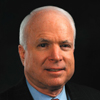
In an historically unprecedented move, more than 30 national HIV/AIDS organizations and leaders representing African-American, Latino, Native American/Alaska Native and Asian & Pacific Islander communities have joined forces in an urgent call for the development and implementation of a comprehensive national AIDS strategy.
The demands to the Democratic and Republican presidential nominees come in response to long-standing concerns about unmet needs for targeted HIV-research, treatment access, medical care and prevention in communities of color. A recently released report from the U.S. Center for Disease Control and Prevention (CDC) on estimates of new HIV infections in the United States amplifies the crises faced in communities of color.
According to the CDC's alarming new estimates, communities of color account for a combined total of 65 percent of the approximately 56,300 new HIV infections occurring in the United States. By the CDC's own admission, this new estimate is 40 percent higher than the CDC's earlier estimate of 40,000 infections per year. The startling new HIV rates are of special concern for people of color who are more likely to die from the disease than HIV-infected whites. AIDS advocates representing communities of color have long expressed dissatisfaction with the current lethargic, fragmented and unaccountable U.S. response to the epidemic, which they point out, is a direct result of the non-existent national plan.
Leading national HIV organizations and leaders representing communities of color convened at the Ford Foundation in New York City this month to formulate a national HIV response to the new administration that will take office in January. Pledging to work together to strengthen the HIV/AIDS response-nationally, and in their own communities-these organizations agreed on an urgent seven-point action plan.
Foundation in New York City this month to formulate a national HIV response to the new administration that will take office in January. Pledging to work together to strengthen the HIV/AIDS response-nationally, and in their own communities-these organizations agreed on an urgent seven-point action plan.
The action points stipulate, first and foremost, the urgent need for the next administration to rapidly initiate a National AIDS Strategy that engages the entire federal government in the fight against HIV and holds each department accountable for improved results in communities of color.
Ironically, the U.S. government requires foreign countries receiving American HIV/AIDS assistance to have a national strategy for addressing the epidemic, where there is none in place in our own country. The action plan also demands the federal government improve its inadequate data gathering methods, currently accounting for only 33 out of the 50 states and 5 dependent territories, excluding other states and territories severely impacted by the epidemic.
This flawed process results in the underestimation of HIV rates and impedes efforts to allocate adequate resources to address HIV/AIDS prevention, treatment and care for all at-risk Americans.
Public health advocates also stress that the socio-economic drivers of the epidemic disproportionately impact communities of color. Such factors include poverty, limited educational opportunities, gender inequities, homophobia, HIV stigma and inadequate health access. The needs of communities of color are further compromised by the current administration's response to the epidemic including a derisory allocation of only 4 percent of HIV-related domestic spending towards HIV prevention efforts and the flat-funding of the Minority HIV/AIDS Initiative for the past six years despite increasing rates of transmission in people of color communities during that time.
The partnering organizations and leaders stand together to demand concrete action from the new president and his administration. The organizations and leaders represent various individuals, including health service providers, policy makers, physicians, medical schools and people living with HIV/AIDS. The representatives come together from across the country including Hawaii. Together, they bring a voice to the needs of people in urban, rural and native reservation communities.














0 comments:
Post a Comment